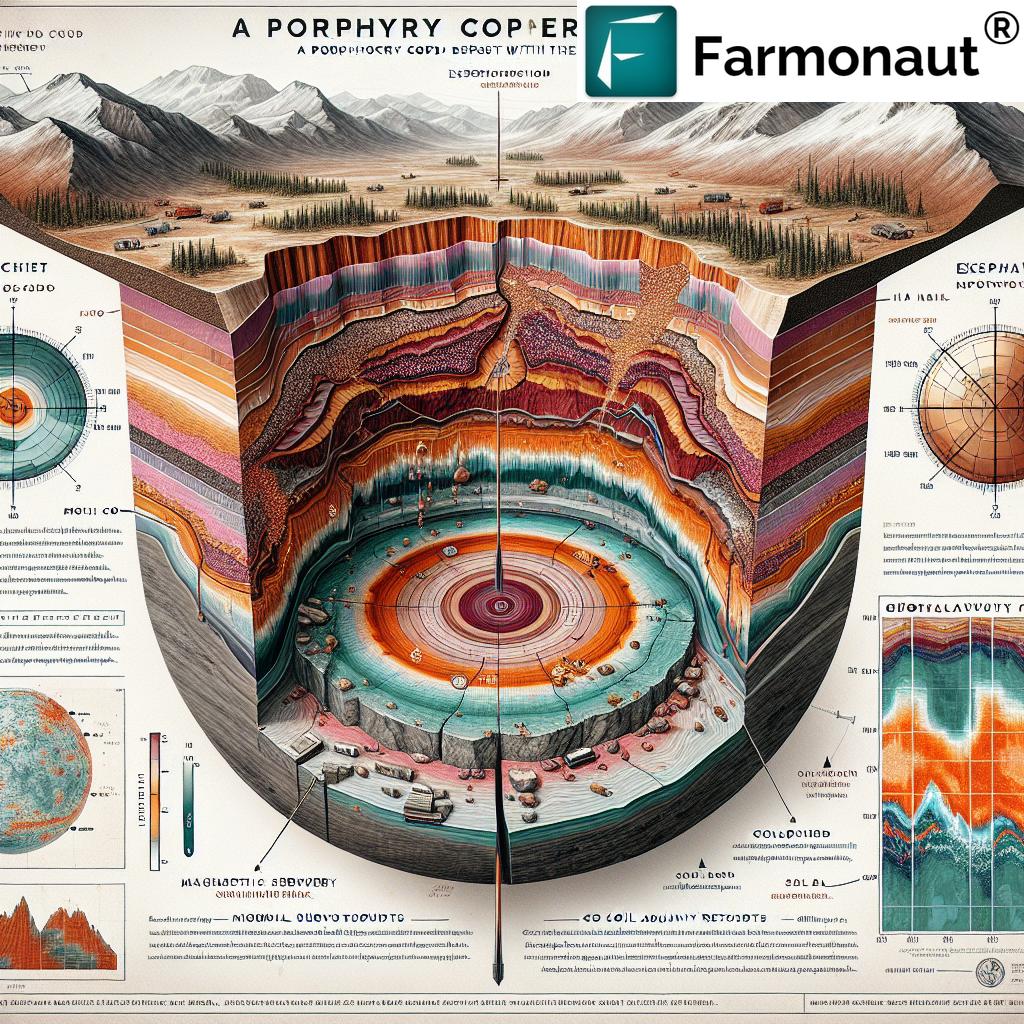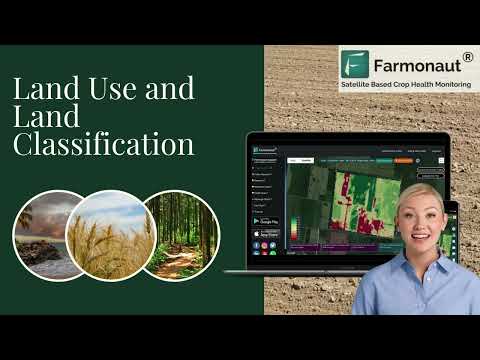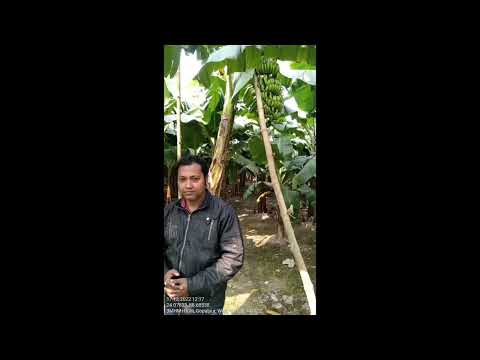Unlocking Mineral Wealth: British Columbia’s Stikine Terrane Reveals Promising Porphyry Copper Exploration Targets
“British Columbia’s Stikine Terrane hosts potential copper-molybdenum-gold deposits, attracting significant mineral exploration interest.”
In the heart of British Columbia’s rugged landscape lies a geological treasure trove that has captured the attention of mining enthusiasts and industry professionals alike. The Stikine Terrane, a vast expanse of mineral-rich terrain, is emerging as a hotspot for porphyry copper exploration, promising to reshape the landscape of Canadian mineral resources. As we delve into the latest developments in British Columbia mining projects, we’ll uncover the exciting opportunities that are driving the future of mineral exploration in this region.
The Geological Marvel of Stikine Terrane
The Stikine Terrane, a complex geological formation spanning much of west-central British Columbia, has long been recognized for its potential to host significant mineral deposits. This area is particularly noteworthy for its porphyry copper exploration targets, which are drawing increased attention from mining companies and researchers alike.
Porphyry deposits are known for their large-scale, low-grade concentrations of copper, molybdenum, and gold. These deposits form the backbone of global copper production, making the Stikine Terrane a critical area for future resource development. The unique geological characteristics of this region, including its intrusive igneous rocks and extensive hydrothermal alteration, create ideal conditions for the formation of these valuable mineral deposits.

Recent Developments in Exploration
The exploration landscape in British Columbia has been buzzing with activity, as companies leverage advanced technologies and methodologies to unearth the hidden potential of the Stikine Terrane. Recent geophysical surveys for mining have played a crucial role in identifying promising mineral soil anomalies, paving the way for more targeted exploration efforts.
“Recent geophysical surveys in British Columbia have identified multiple promising mineral soil anomalies for porphyry copper exploration.”
These surveys, employing cutting-edge techniques such as airborne magnetometry and induced polarization, have revealed several areas of interest characterized by magnetic and conductivity anomalies consistent with porphyry-style mineralization. The integration of this geophysical data with geological mapping and geochemical sampling has resulted in the identification of multiple high-priority exploration targets across the region.
The Hanson Property: A New Frontier in Mineral Exploration
One of the most exciting developments in the Stikine Terrane exploration scene is the recent acquisition of the Hanson Property by Rokmaster Resources Corp. This significant mining property acquisition expands the company’s exploration possibilities in the region and highlights the growing interest in British Columbia’s mineral potential.
The Hanson Property, spanning 5,349 hectares, is strategically located within the prolific Stikine Terrane, approximately 20 km north of the past-producing Endako Mine. This acquisition joins Rokmaster’s existing Mystery and Fox-Coconut Properties in their Nechako Project, creating a substantial land package with multiple exploration targets for porphyry Cu-Mo-Au mineralization.
Key Exploration Zones at Hanson Property
The property boasts three principal targets that have been the focus of multiple exploration programs since 1965:
- Buckley Zone: Characterized by a large and strong Mo soil anomaly, this zone has seen limited exploration since the late 1970s. Recent ZTEM surveys have revealed a magnetic low embayment in the Early Cretaceous Hanson Lake phase of the Endako Batholith, suggesting potential for mineralization at depth.
- Wilson Zone: This area features a Mo-Cu soil anomaly coincident with a chargeability anomaly. Surface sampling has yielded impressive results, with values up to 1.37% Mo, 1.79% Cu, and 0.10 g/t Au. The 2012 ZTEM survey identified a concentric magnetic low coincident with these anomalies, straddling the contact between different geological units.
- Cyr Zone: Developed through trenching, pitting, and drilling in the late 1980s and early 1990s, this zone is underlain by a quartz porphyry unit with strong clay alteration and disseminated pyrite. Previous sampling has revealed high levels of silver, lead, and zinc, particularly in silicified zones.
Exploration Techniques and Technologies
The success of mineral exploration in the Stikine Terrane relies heavily on the application of advanced exploration techniques and technologies. Companies are employing a multi-faceted approach to identify and evaluate potential porphyry copper deposits:
- Geophysical Surveys: ZTEM (Z-Axis Tipper Electromagnetic) surveys have proven particularly effective in mapping subsurface structures and identifying potential mineralization zones. These surveys provide valuable insights into the magnetic and conductivity properties of the underlying rock formations.
- Geochemical Sampling: Systematic soil and rock sampling programs are crucial for delineating anomalous areas and guiding further exploration efforts. The analysis of these samples for copper, molybdenum, gold, and pathfinder elements helps in vectoring towards potential ore bodies.
- Drilling Programs: Targeted drilling based on the integration of geophysical and geochemical data allows for the direct testing of promising anomalies. Recent drilling results have provided valuable information on the depth, extent, and grade of mineralization in various exploration targets.
- 3D Modeling: Advanced computer modeling techniques are being used to integrate all available geological, geophysical, and geochemical data into comprehensive 3D models of the subsurface. These models aid in visualizing the spatial relationships between different geological units and mineralized zones, guiding future exploration strategies.
The integration of these techniques allows for a more comprehensive understanding of the geological context and mineralization potential of the Stikine Terrane, significantly enhancing the efficiency and effectiveness of exploration programs.
Strategic Importance for British Columbia’s Mining Industry
The ongoing exploration activities in the Stikine Terrane hold significant strategic importance for British Columbia’s mining industry and the broader Canadian mineral resources sector. The development of new porphyry copper deposits in this region could have far-reaching implications:
- Economic Impact: The discovery and development of large-scale porphyry copper deposits could provide a substantial boost to the local and provincial economy, creating jobs and stimulating economic growth in rural areas.
- Global Copper Supply: With the increasing global demand for copper, driven by renewable energy technologies and electric vehicles, new deposits in British Columbia could play a crucial role in meeting future supply needs.
- Technological Advancements: The challenges associated with exploring and developing deposits in the Stikine Terrane are driving innovations in exploration technologies and mining techniques, potentially benefiting the broader mining industry.
- Environmental Considerations: The focus on developing mineral resources in a jurisdiction with strong environmental regulations ensures that exploration and potential future mining activities adhere to high standards of environmental stewardship.

Challenges and Opportunities in Stikine Terrane Exploration
While the Stikine Terrane presents exciting opportunities for mineral exploration, it also comes with its share of challenges:
- Remote Locations: Many of the promising exploration targets are located in remote areas with limited infrastructure, presenting logistical challenges for exploration and potential future development.
- Complex Geology: The intricate geological setting of the Stikine Terrane requires sophisticated exploration techniques and careful interpretation of geological data to identify viable targets.
- Environmental Considerations: Exploration activities must be conducted with strict adherence to environmental regulations, particularly given the pristine nature of many areas within the Stikine Terrane.
- Capital Intensity: The exploration and development of porphyry copper deposits require significant capital investment, particularly in the early stages when risks are highest.
Despite these challenges, the potential rewards of successful exploration in the Stikine Terrane are substantial. The region’s geological potential, combined with British Columbia’s stable regulatory environment and proximity to Asian markets, makes it an attractive destination for mineral exploration investment.
The Role of Technology in Modern Exploration
As we delve deeper into the exploration of the Stikine Terrane, it’s crucial to highlight the pivotal role that technology plays in modern mineral exploration. Advanced technological solutions are not only enhancing the efficiency of exploration efforts but also minimizing environmental impact and improving safety standards.
One such technological advancement that has revolutionized the field of resource management and exploration is satellite-based monitoring. While our focus is on mineral exploration, it’s worth noting that similar technologies are making waves in other resource-intensive sectors, including agriculture.
For instance, companies like Farmonaut are leveraging satellite technology to provide valuable insights for land management and resource optimization. Although primarily focused on agricultural applications, the principles behind such technologies – remote sensing, data analysis, and predictive modeling – have parallel applications in mineral exploration.
In the context of mineral exploration, satellite-based technologies offer several advantages:
- Large-Scale Surveying: Satellites can cover vast areas quickly, providing a comprehensive overview of geological features and potential exploration targets.
- Multispectral Imaging: Advanced sensors can detect subtle variations in surface composition, helping to identify areas of alteration associated with mineralization.
- Temporal Monitoring: Regular satellite passes allow for the monitoring of changes over time, which can be crucial for understanding geological processes and the impact of exploration activities.
- Environmental Compliance: Satellite imagery can help in monitoring and ensuring compliance with environmental regulations during exploration and mining operations.
While the specific applications differ, the underlying principle of using remote sensing and data analysis to optimize resource management remains consistent across sectors. This convergence of technologies across industries highlights the potential for cross-sector innovation and knowledge transfer in the field of resource exploration and management.
Future Outlook for Stikine Terrane Exploration
As we look to the future of mineral exploration in British Columbia’s Stikine Terrane, several key trends and factors are likely to shape the landscape:
- Continued Technological Advancement: We anticipate further integration of AI and machine learning in data analysis, enhancing our ability to identify subtle patterns indicative of mineralization.
- Sustainable Exploration Practices: There will be an increased focus on developing and implementing exploration techniques that minimize environmental impact, in line with growing global emphasis on sustainability in the mining sector.
- Collaboration and Data Sharing: We expect to see more collaborative efforts between exploration companies, research institutions, and government agencies to pool resources and share data, accelerating the pace of discovery.
- Diversification of Target Minerals: While copper remains a primary focus, exploration efforts may expand to include other critical minerals essential for clean energy technologies.
The exploration of the Stikine Terrane represents a significant opportunity for the Canadian mining industry to contribute to the global supply of critical minerals. As we continue to unravel the geological secrets of this region, we remain committed to responsible exploration practices that balance economic opportunities with environmental stewardship.
Porphyry Copper Exploration Targets in British Columbia’s Stikine Terrane
| Target Name | Location (Coordinates) | Geological Features | Estimated Copper Grade (%) | Associated Minerals | Exploration Stage | Recent Drilling Results | Geophysical Survey Findings | Soil Anomaly Characteristics | Potential Resource Estimate (million tonnes) |
|---|---|---|---|---|---|---|---|---|---|
| Buckley Zone | 54°N, 125°W | Early Cretaceous Hanson Lake phase | 0.3 – 0.5 | Molybdenum | Early | 5 shallow holes, 471m total | Magnetic low embayment | Strong Mo anomaly | 100 – 200 |
| Wilson Zone | 54.1°N, 125.1°W | Contact between Hanson Lake phase and gneissic quartz diorites | 0.5 – 1.0 | Molybdenum, Gold | Advanced | 2 holes, 100m total | Concentric magnetic low, IP chargeability high | Mo-Cu soil anomaly | 150 – 300 |
| Cyr Zone | 54.2°N, 125.2°W | Quartz porphyry with clay alteration | 0.2 – 0.4 | Silver, Lead, Zinc | Intermediate | Multiple trenches and pits | Not specified | High Ag, Pb, Zn in silicified zones | 50 – 100 |
Implications for the Global Copper Market
The exploration activities in British Columbia’s Stikine Terrane have significant implications for the global copper market. As one of the world’s most important industrial metals, copper plays a crucial role in various sectors, including construction, electronics, and renewable energy technologies. The potential discovery of substantial porphyry copper deposits in this region could have far-reaching effects:
- Supply Diversification: New discoveries in the Stikine Terrane could help diversify global copper supply, reducing dependence on traditional copper-producing regions and potentially stabilizing prices.
- Meeting Growing Demand: With the increasing adoption of electric vehicles and renewable energy technologies, the demand for copper is expected to rise significantly in the coming decades. New deposits in British Columbia could play a crucial role in meeting this growing demand.
- Geopolitical Considerations: The development of copper resources in a stable jurisdiction like Canada could provide a more secure supply chain for critical minerals, an increasingly important consideration in the current global geopolitical landscape.
- Technological Innovation: The challenges associated with exploring and developing deposits in the Stikine Terrane are likely to drive innovations in mining and processing technologies, potentially leading to more efficient and environmentally friendly copper production methods.
As we continue to explore and assess the potential of the Stikine Terrane, it’s clear that the outcomes of these efforts could have a significant impact on the future of global copper supply and the broader mining industry.
Environmental Considerations and Sustainable Exploration
While the potential economic benefits of mineral exploration in the Stikine Terrane are significant, it’s crucial to address the environmental considerations associated with these activities. The mining industry, including exploration companies, is increasingly adopting sustainable practices to minimize environmental impact and ensure responsible resource development.
Some key environmental considerations in the exploration of the Stikine Terrane include:
- Habitat Protection: Many areas within the Stikine Terrane are home to diverse ecosystems and wildlife. Exploration activities must be conducted with careful consideration for these natural habitats.
- Water Management: Proper management of water resources is crucial, both in terms of usage during exploration activities and protection of local water bodies from potential contamination.
- Land Reclamation: Even during the exploration phase, companies are committed to restoring disturbed areas to their natural state as much as possible.
- Carbon Footprint Reduction: Efforts are being made to reduce the carbon footprint of exploration activities through the use of more efficient equipment and renewable energy sources where possible.
In this context, it’s worth noting that technologies similar to those used in mineral exploration are also being applied in other sectors to promote sustainability. For instance, Farmonaut’s carbon footprinting tools, while designed for agricultural applications, demonstrate how satellite technology and data analysis can be used to monitor and manage environmental impact across various industries.
The Role of Government and Regulatory Framework
The success of mineral exploration in the Stikine Terrane is closely tied to the regulatory framework and government policies in British Columbia and Canada. The government plays a crucial role in several aspects:
- Permitting and Regulation: The government oversees the permitting process for exploration activities, ensuring that they meet environmental and safety standards.
- Land Use Planning: Balancing mineral exploration with other land uses, including forestry, agriculture, and conservation, is a key responsibility of government agencies.
- Incentives and Support: Government programs, such as tax incentives or grants for exploration activities, can significantly impact the level of investment in the region.
- Infrastructure Development: Government investment in infrastructure, such as roads and power lines, can greatly enhance the viability of exploration projects in remote areas.
The regulatory environment in British Columbia is generally considered favorable for mineral exploration, with clear processes and standards that promote responsible development while protecting environmental and community interests.
Community Engagement and Social License
A critical aspect of mineral exploration in the Stikine Terrane is engagement with local communities, particularly Indigenous peoples who have deep historical and cultural ties to the land. Successful exploration projects require a strong social license to operate, which is built on trust, transparency, and mutual benefit.
Key elements of community engagement include:
- Consultation and Collaboration: Early and ongoing consultation with Indigenous communities and local stakeholders is essential for understanding and addressing concerns.
- Economic Opportunities: Exploration activities can bring economic benefits to local communities through employment, training, and business opportunities.
- Cultural Respect: Recognizing and respecting the cultural significance of the land is crucial for building positive relationships with Indigenous communities.
- Environmental Stewardship: Demonstrating a commitment to environmental protection and involving local communities in environmental monitoring can help build trust and support.
By prioritizing community engagement and social responsibility, exploration companies can create a more sustainable and mutually beneficial approach to resource development in the Stikine Terrane.
Conclusion: A Promising Future for Mineral Exploration in British Columbia
As we conclude our exploration of the Stikine Terrane’s mineral potential, it’s clear that this region represents a significant opportunity for the future of Canadian mineral resources. The ongoing exploration activities, driven by advanced technologies and a commitment to responsible development, are unveiling promising porphyry copper exploration targets that could play a crucial role in meeting global demand for critical minerals.
The success of these exploration efforts will depend on a combination of factors, including:
- Continued technological innovation in exploration techniques
- Favorable regulatory and economic conditions
- Effective community engagement and environmental stewardship
- Global market dynamics for copper and associated minerals
As the exploration landscape evolves, we remain committed to providing up-to-date information and analysis on these exciting developments in British Columbia’s mining sector. The Stikine Terrane’s potential to host significant porphyry copper deposits positions it as a key player in the future of mineral exploration, not just in Canada, but on a global scale.
We invite industry professionals, investors, and those interested in the world of mineral resources to stay tuned for further updates on this dynamic and promising exploration frontier. The future of mineral exploration in British Columbia’s Stikine Terrane is bright, and we look forward to witnessing the discoveries and developments that lie ahead.
FAQ Section
- What is the Stikine Terrane?
The Stikine Terrane is a geological region in west-central British Columbia known for its potential to host significant mineral deposits, particularly porphyry copper-molybdenum-gold deposits. - Why is porphyry copper exploration important in this region?
Porphyry copper deposits are large, low-grade ore bodies that form a significant portion of the world’s copper supply. The Stikine Terrane’s geological characteristics make it highly prospective for these types of deposits. - What are the main exploration targets in the Hanson Property?
The Hanson Property features three main exploration targets: the Buckley Zone, Wilson Zone, and Cyr Zone, each with distinct geological characteristics and mineralization potential. - How are new technologies being used in mineral exploration in the Stikine Terrane?
Advanced technologies such as satellite imagery, AI-driven data analysis, and sophisticated geophysical surveys are being employed to identify and assess potential mineral deposits more effectively and efficiently. - What are the environmental considerations for exploration in this region?
Environmental considerations include habitat protection, water management, land reclamation, and reducing the carbon footprint of exploration activities. Companies are increasingly adopting sustainable practices to minimize environmental impact.
Earn With Farmonaut: Affiliate Program
Earn 20% recurring commission with Farmonaut’s affiliate program by sharing your promo code and helping farmers save 10%. Onboard 10 Elite farmers monthly to earn a minimum of $148,000 annually—start now and grow your income!
Farmonaut Subscriptions







